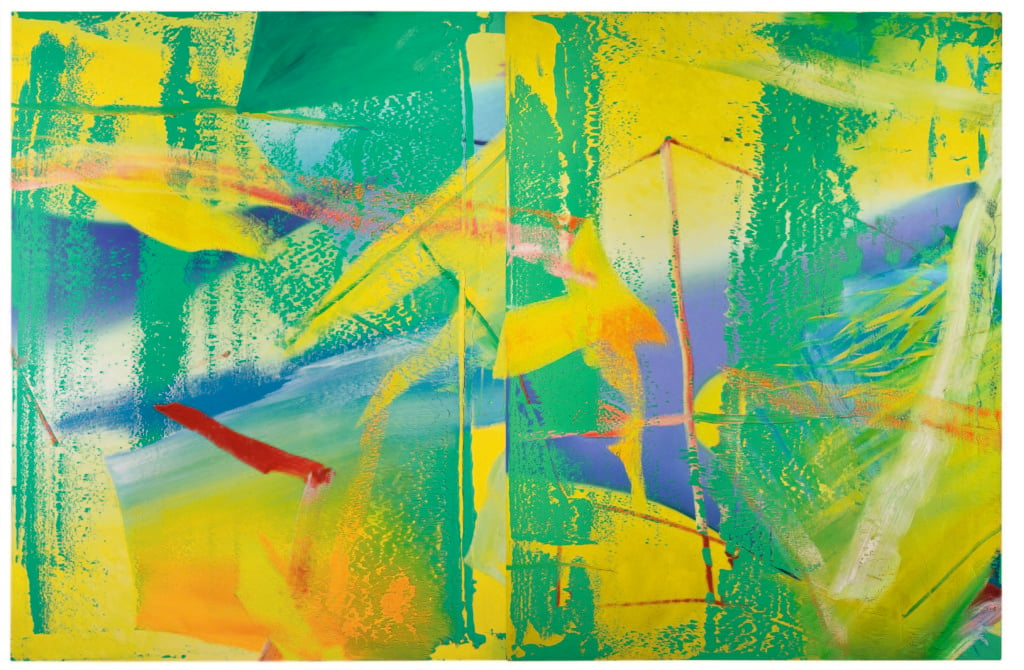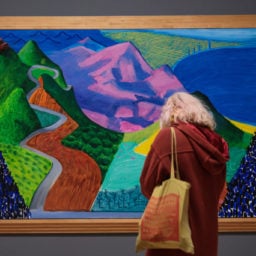Sotheby’s took up the running in London’s contemporary art auction series this evening, March 7, with a 58-lot sale estimated from £84.5 million ($117.5 million)—almost exactly the same as last year. The 2017 sale achieved the third-highest total for a contemporary sale in London at £118 million ($164 million). Wednesday evening’s sale fell just short of that with £109.3 million ($151.7 million), the fourth-highest for Sotheby’s in London in this category.
Taking some drama out of the proceedings, 21 of the lots were guaranteed either by Sotheby’s or a third party, with a combined low estimate of £48.5 million ($67.4 million)—more than half the value of the sale. Eleven of them were last-minute third-party guarantees, arranged in the 48 hours before the sale. These guarantees suggest that expressed pre-sale levels of interest were low, but also that guarantors spotted opportunities to buy into works they believed in.
One good example was Michelangelo Pistoletto’s mirror painting Lovers (1962–66), which received a late third-party guarantee or irrevocable bid: It sold below estimate, presumably to the guarantor, for £2.6 million or $3.6 million. (All prices include the buyers’ premium; pre-sale estimates do not.) On the way out of the saleroom, bankers, collectors, and auction house board members Kemal and Halit Cingillioglu, who are known to guarantee works at auction, took a detour to inspect and admire the painting. Was it now theirs?
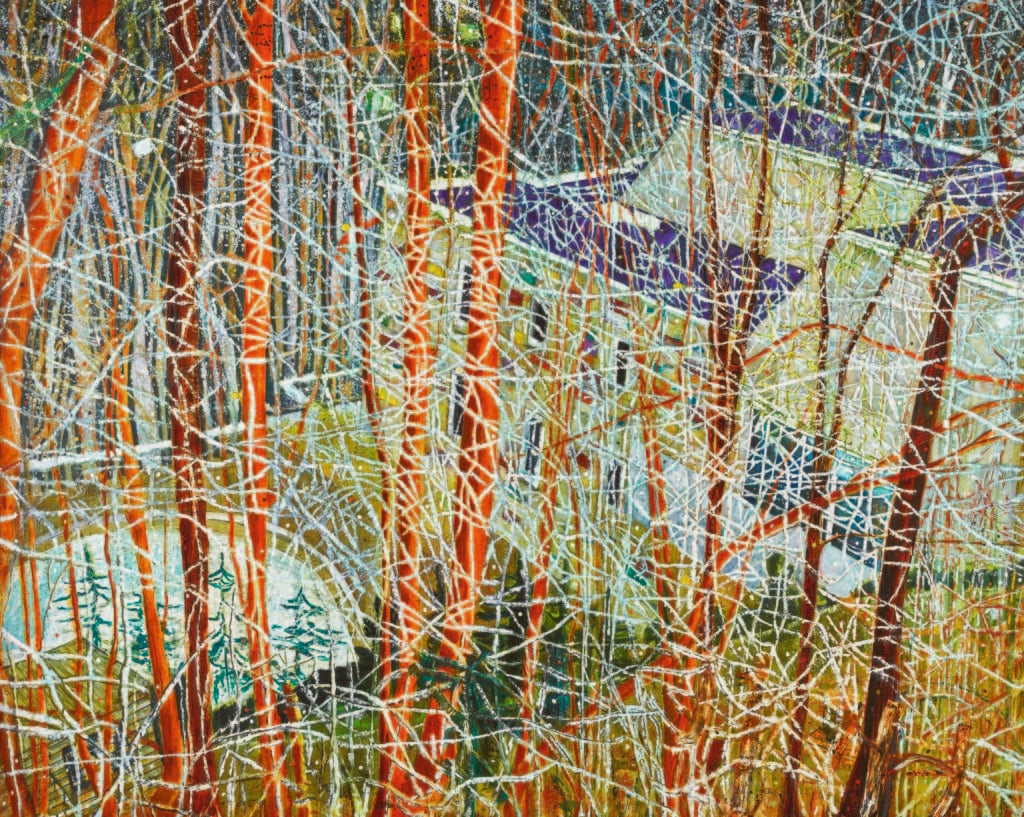
Peter Doig, The Architect’s Home in the Ravine (1991). Image courtesy of Sotheby’s.
The top lot of the sale, Peter Doig’s The Architect’s Home in the Ravine (1991), also had a late third-party guarantee and sold below estimate for £14.4 million ($20 million), presumably to the guarantor. One of the most traded paintings at auction, the work has reaped huge profits for each seller in turn. The greatest leap in percentage was between 1992 and 2002, when it was bought from the artist’s studio for £1,500 by accountants Arthur Andersen and then sold to Charles Saatchi for £314,650 10 years later. The greatest profit was realized between 2007 and 2013, when it was bought for £1.8 million and sold six years later for for £7.7 million. The seller this evening bought it in 2016 for £11.3 million ($15.7 million) and would have made close to £2 million after fees, if there were any.
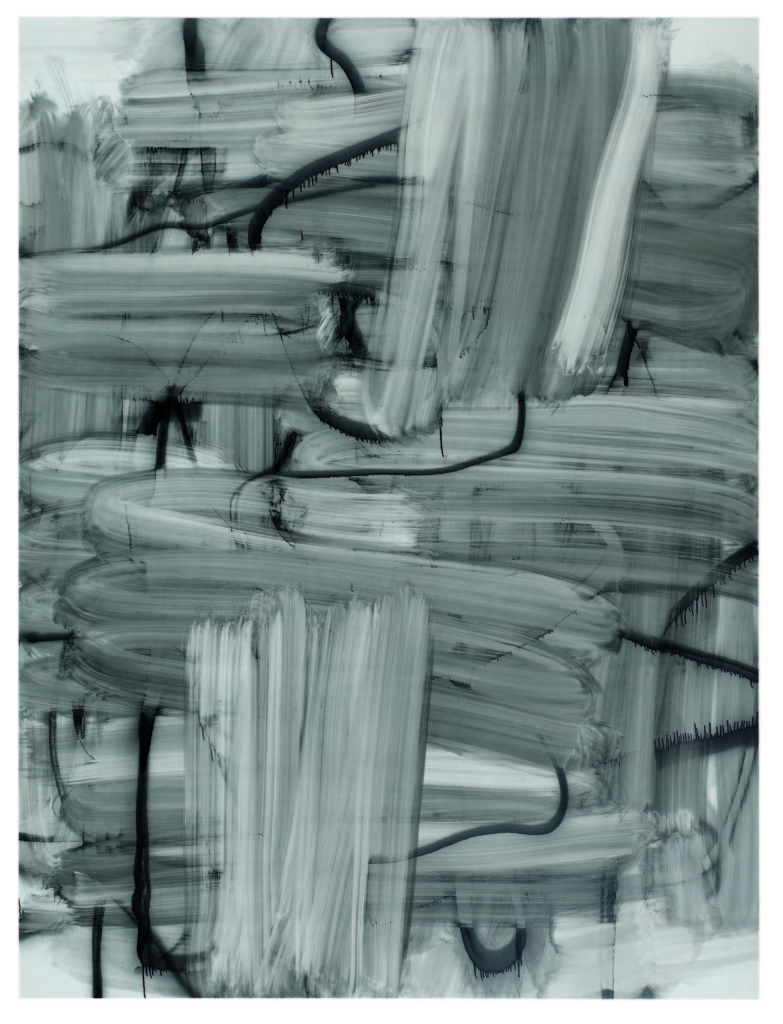
Christopher Wool, Untitled (2007). Image courtesy of Sotheby’s.
There was real competition, however, for other works with third-party guarantees. Christopher Wool’s very large 2007 untitled abstract from his “Gray Painting” series was also one in which Sotheby’s had a financial interest (the auction house had an ownership stake in the work). Estimated at £4.2 million, it was the subject of a lengthy bidding battle between art advisor Philippe Segalot and Andre Fabricant of the Richard Gray Gallery, selling to the latter for £10.4 million ($15.1 million).
There was a similar guarantee on a rare Gerhard Richter color chart painting titled 1025 Farben (1974). Very few works from this series have been at auction, possibly because some are known to have condition problems. The last color chart painting at auction was in 2014 when a larger work, though with fewer colors, sold below estimate for £3.9 million. This evening’s example had a £5.7 million estimate and attracted competition from Brett Gorvy of the Levy Gorvy gallery, and Nicholas MacLean of Eykyn Maclean, the former winning out at £7.4 million ($10.3 million). The painting was last sold in New York in 2008 for $4 million (£2.1 million).
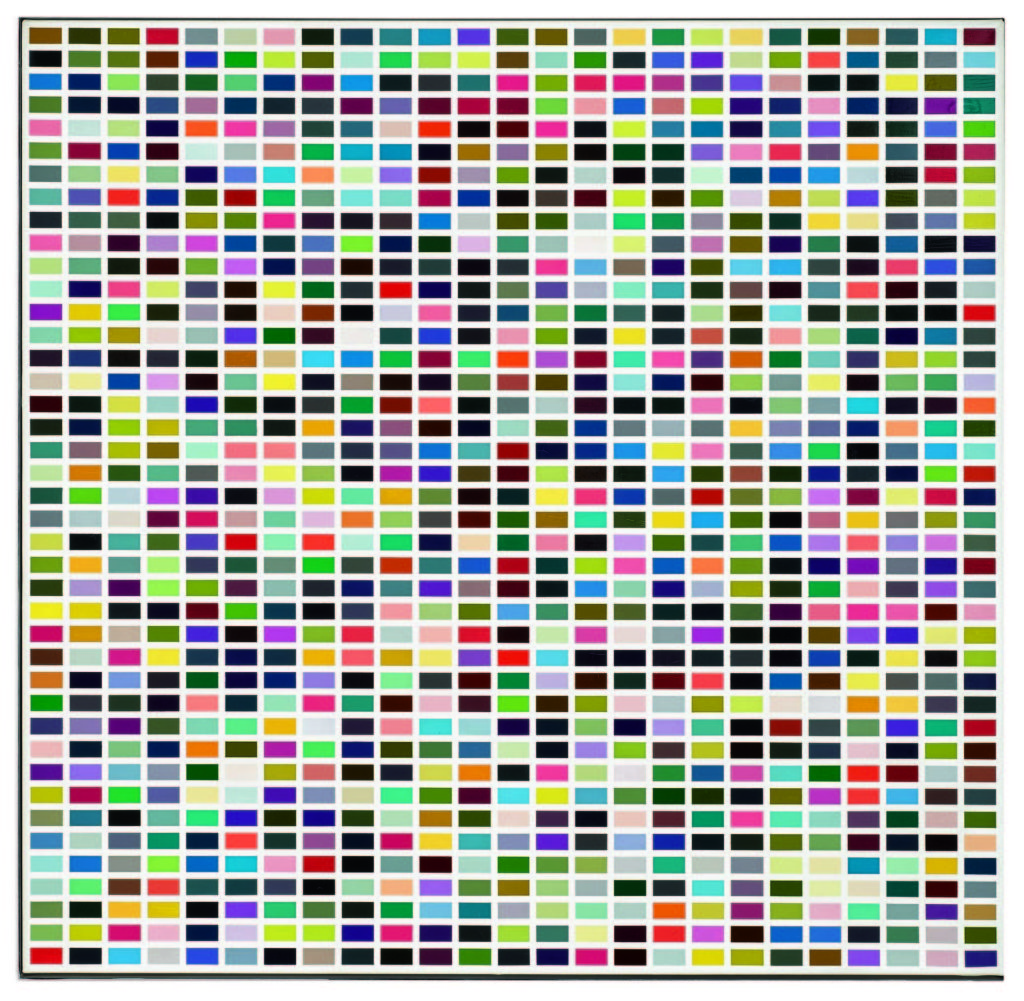
Gerhard Richter, 1025 Farben (1974). Image courtesy of Sotheby’s.
Demand for Richter, though, still centers on his more gestural, squeegee abstracts—the more luxurious looking the better. The Sotheby’s sale included a very large early example, Gelbgrün (Yellow-Green) (1982), once handled by the disgraced dealer, Helge Achenbach, with a £7–£10 million estimate. It needed no guarantee and sailed to £10.9 million ($15.1 million) on a phone bid from an American buyer, much to the delight of its German owner.
The most impressive gains were for some of the comparatively lower value lots. US artist Sam Gilliam, for instance, has been riding a steep incline these past couple of years, and one seller had been lucky enough to buy one of his folded polyester works from 1982, After Micro W #2, through an online Paddle 8 auction in 2016 for $44,000. This evening it sold for £200,000 ($277,520).
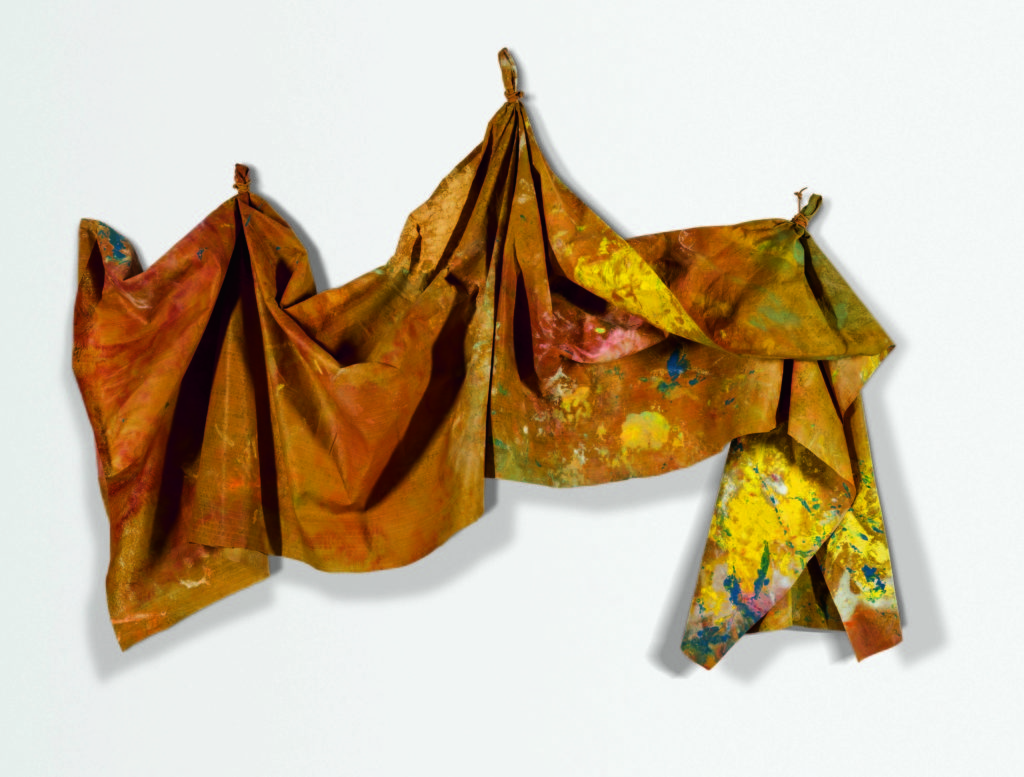
Sam Gilliam, After Micro W #2 (1982). Image courtesy of Sotheby’s.
Another prescient seller was an early supporter of Richard Prince, who bought a joke painting in 1995 at Christie’s for just £6,900. The Housewife and the Grocer (1988) sold tonight below estimate, but it hammered down for £1.4 million ($1.95 million) to dealer Per Skarstedt.
After a quiet few years in the auction room, the Prince market is beginning to look beyond the highly priced “Nurse” paintings. On Wednesday night, another early work, a fibreglass car bonnet sculpture from 1989–90 sold above estimate for £2 million ($2.8 million). A record for a Prince sculpture, it sold to Amalia Dayan of the Luxembourg Dayan gallery and wife of collector Adam Lindemann, who had to beat off competition from the Nahmad family and a collector from Paris.
Of the British artists, apart from Doig, there was another disappointment for a 1960s Hockney following an example at Christie’s yesterday, which sold on the low estimate for £3.4 million ($4.72 million). Sotheby’s iteration, Different Kinds of Water Pouring into a Swimming Pool (1965), came from an Asian collector who bought it in 1989 for £313,400. Now estimated at £6–£8 million, it flopped without a bid at £4.5 million ($6.26 million).
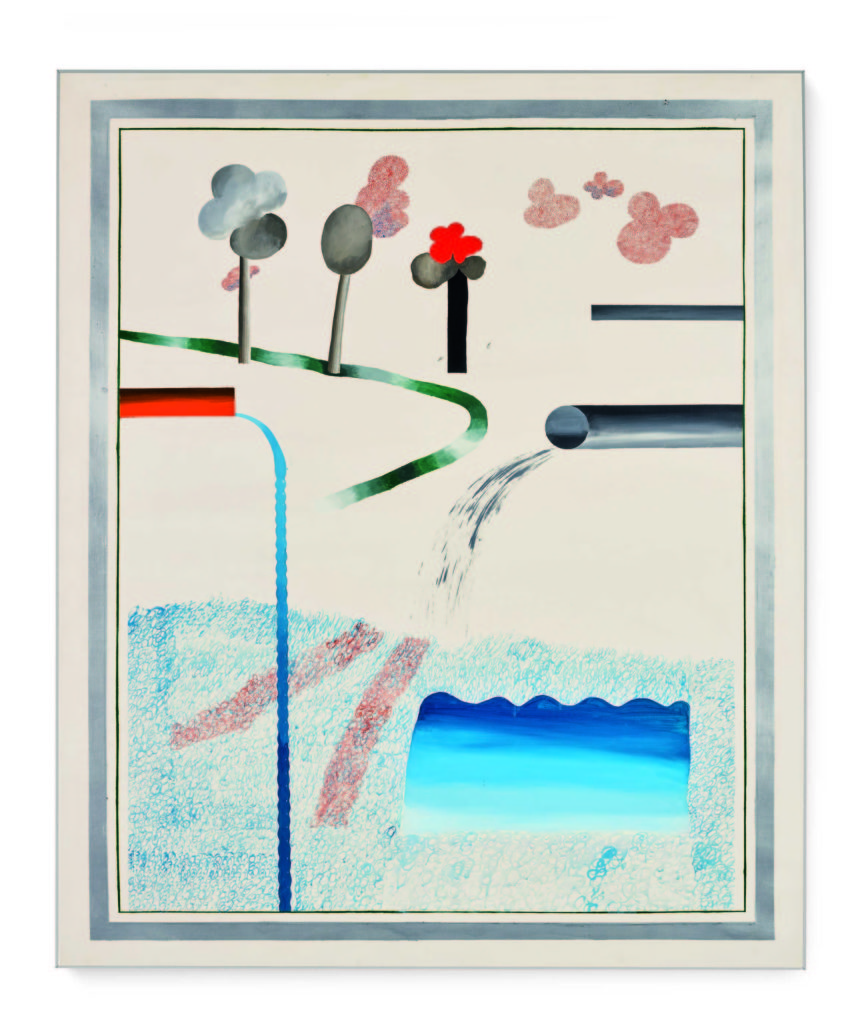
David Hockney, Different Kinds of Water Pouring into a Swimming Pool (1965). Image courtesy of Sotheby’s.
Doing better for Britain were Hurvin Anderson, Grayson Perry (on a roll since his Serpentine gallery show last year), and Antony Gormley. The 1977 maquette for Gormley’s landmark Angel of the North sculpture was chased by art advisor Hugo Nathan before selling to a phone bidder above estimate for £2.9 million ($4 million)—an almost threefold increase on its cost at auction four years ago.
Other American artists fetching strong prices were Laura Owens, in her first evening sale at Sotheby’s; Peter Halley, whose day-glo 1986 painting Yellow Cell with Red Conduit fetched a record £513,000 ($711,839); and Jason Rhoades, whose 2003 shelf rack of neon signs titled Down Under sold for a record £345,000 ($478,722)—albeit below the estimate.
Apart from Richter and Polke, the outstanding German artist was Albert Oehlen whose market has taken off since his show at the New Museum in 2015 and his representation in the US by the Gagosian Gallery. In this sale, an untitled abstract from 1994, which set a record £448,000 ($622,970) for the artist in 2012, was back; this time it sold for £1.9 million ($2.64 million) to a US phone bidder who fended off competition from London’s White Cube gallery.
